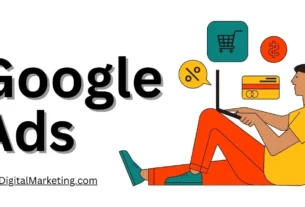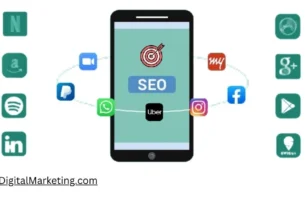In today’s fast-evolving digital landscape, staying ahead of the curve is crucial for businesses that want to remain competitive. With each passing year, new technologies and strategies emerge, shaping the way brands connect with their audiences. As we look ahead to 2025, several digital marketing trends are poised to transform the industry in game-changing ways. In this article, we’ll explore eight trends that every marketer should be aware of to stay relevant and successful.
1. AI-Driven Personalization at Scale
AI is no longer just a buzzword—it’s fundamentally changing how brands deliver personalized experiences. In 2025, AI-driven personalization will be at the heart of marketing strategies, enabling brands to tailor content, ads, and user experiences at scale.
Why It Matters: AI allows for hyper-personalization, analyzing vast amounts of data to deliver the right message at the right time to individual users. This leads to higher engagement, increased conversions, and improved customer loyalty.
Example in Action: Think of AI-powered chatbots that provide personalized product recommendations or predictive analytics that anticipate a customer’s needs before they even express them. In 2025, this level of personalization will be the standard, not the exception.
2. Voice Search and Conversational Marketing
Voice search is rapidly changing how people seek information, and conversational marketing tools like chatbots are becoming smarter by the day. As more consumers rely on voice assistants like Alexa or Google Assistant, marketers need to rethink their SEO strategies.
Why It Matters: Voice searches tend to be more conversational and question-based, so content must be optimized for natural language queries. Plus, conversational marketing tools provide real-time, personalized interactions that engage users more effectively.
Example in Action: To adapt, businesses should start focusing on long-tail keywords and creating content that answers specific, voice-friendly questions. Incorporating voice search optimization into SEO strategies will be critical for visibility.
3. The Rise of Zero-Party Data
As privacy concerns continue to grow and third-party cookies become a thing of the past, zero-party data (information that customers willingly share with a brand) will become invaluable. Brands will need to shift their focus from third-party tracking to building trust and collecting data directly from consumers.
Why It Matters: With more emphasis on data privacy, zero-party data allows businesses to collect meaningful insights while respecting customer preferences. This ensures compliance with privacy regulations while still enabling personalized marketing.
Example in Action: Many companies will use interactive surveys, quizzes, and loyalty programs to encourage customers to share their preferences and insights directly, allowing for personalized experiences without compromising privacy.
4. Video Commerce and Shoppable Content
Video content has long been a staple of digital marketing, but by 2025, it will be even more interactive and shoppable. Consumers will be able to purchase products directly from videos without leaving the platform, making for a seamless shopping experience.
Why It Matters: As video consumption continues to rise, integrating shopping features within video content will revolutionize the way consumers shop online. This trend will make the buying process quicker and more convenient.
Example in Action: Platforms like Instagram and YouTube are already implementing “buy now” buttons in videos. In 2025, expect live-stream shopping events and interactive video content to become a key part of eCommerce strategies.
5. AR and VR Marketing
Augmented Reality (AR) and Virtual Reality (VR) are providing brands with new ways to engage and immerse their customers. By 2025, AR and VR will be commonly used to create interactive experiences, allowing customers to “try before they buy” from the comfort of their homes.
Why It Matters: AR and VR offer an unparalleled level of interactivity, giving customers the chance to experience products or services in a more tangible way. This increases customer confidence and reduces the barrier to purchase.
Example in Action: AR-powered virtual try-ons for clothing or makeup, VR product demonstrations, and immersive retail experiences are already being adopted by forward-thinking brands. Expect these experiences to become mainstream in the coming years.
6. Social Commerce and Community-Driven Marketing
Social media platforms are no longer just spaces for sharing content; they’re evolving into full-fledged commerce ecosystems. Social commerce allows users to make purchases directly from the platform, and community-driven marketing, powered by influencers and peer recommendations, is becoming a dominant force.
Why It Matters: Consumers trust peer recommendations and user-generated content more than traditional ads. By making it easy to purchase products directly within social apps, brands are simplifying the buyer’s journey.
Example in Action: Instagram and TikTok have launched shopping features that allow users to buy products directly from a post or video. This trend is likely to expand, with more platforms integrating eCommerce functionality in the future.
7. Sustainability and Purpose-Driven Branding
As consumers become more socially conscious, they are gravitating toward brands that stand for something. In 2025, businesses that prioritize sustainability and purpose-driven marketing will have a significant competitive edge.
Why It Matters: Consumers, especially Gen Z and Millennials, are more likely to support brands that align with their values. Brands that can demonstrate a commitment to sustainability, ethical practices, and social causes will build stronger, more loyal customer relationships.
Example in Action: Brands like Patagonia and TOMS have led the way by aligning their business models with social and environmental causes. In the future, businesses that fail to adopt a purpose-driven approach may struggle to maintain customer trust.
8. Blockchain Technology and Decentralized Marketing
Blockchain technology, typically associated with cryptocurrencies, is beginning to have a profound impact on digital marketing. By 2025, decentralized marketing will be on the rise, giving consumers more control over their data while offering greater transparency in advertising.
Why It Matters: Blockchain can enhance trust between brands and consumers by ensuring transparency and security in digital transactions and data exchanges. It can also reduce the need for intermediaries in advertising, leading to more direct and efficient marketing strategies.
Example in Action: Blockchain-based ad networks and decentralized social media platforms are emerging, allowing users to control how their data is used and shared. As privacy concerns grow, decentralized marketing could become a standard practice.
Conclusion
As we approach 2025, these eight trends are set to redefine the digital marketing landscape. From AI-driven personalization to the rise of AR and VR, each trend offers exciting opportunities for businesses to connect with consumers in new and innovative ways. By embracing these trends early, brands can not only stay ahead of the competition but also build stronger, more meaningful relationships with their customers.
Which trend do you think will have the biggest impact on your business? Let us know in the comments!




